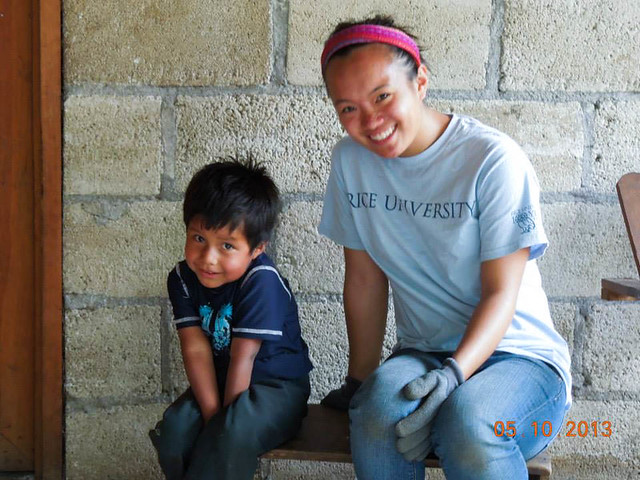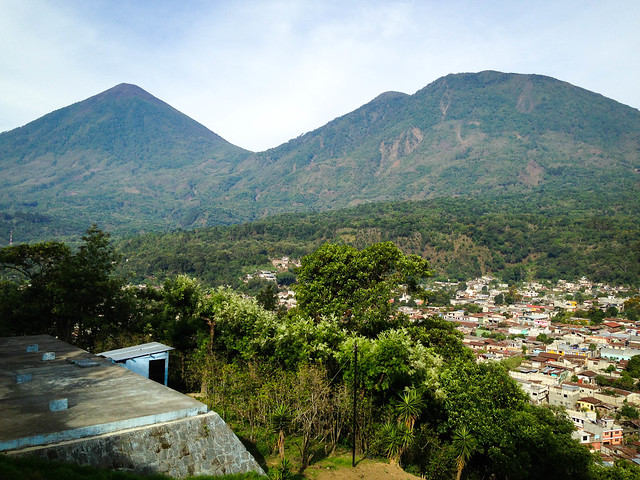Fourteen students and two weeks in rural Central America- just a year ago, it all seemed so daunting. When I decided to lead a group of students on a service-learning trip to Guatemala during my sophomore year of college, I didn’t realize just how difficult it would be. After doing this two summers in a row, I learned that some of the most life-changing travel experiences are the ones that are, at times, the most challenging.

One of the most important aspects of the trip we organized is that it has been running for over 15 years at Rice University, a long-standing tradition that exposes a group of 14 hand-selected students each year to a service project situated in rural Lake Atítlan, Guatemala. The trip only cost our group members a mere $400 for the entire trip: flights, food, accommodation and activities included. The rest we covered through months of fundraising. Making the trip accessible to students of different backgrounds, income levels, and academic interests was one of our main goals, and for many of them it was the first time to have the opportunity to leave the country. Of course, we undertook months of hard work, planning, researching, and fundraising thousands of dollars for our trip in order to make it happen.
While there, we made every effort to live like the locals live. We traveled by foot through the town to our project sites, stayed in local accommodations, and ate the typical food. Some of the group’s members even became severely ill because of the amoebas in the water, a disease common in these areas of Guatemala. Of course, our appearance and diverse characteristics made us stand out within the community, but everyone we met welcomed us warmly. Most of the students in our group had at least a basic knowledge of Spanish, and everyone quickly learned as we immersed ourselves in the vibrant town of San Lucas Tolimán.

Each day, we worked in the sweltering heat, helping to build projects that community members requested. At one point, I helped to construct part of a women’s resource center that teaches women skills, such as cooking, weaving, and sewing, that they can use to support their families. Our group also helped build clean air stoves in the homes of local families to prevent the horrid respiratory diseases resulting from smoke inhalation that plague many inhabitants of the area. On some afternoons, we would work in a free-trade coffee plantation sorting beans by hand, a task the local people are required to do themselves in the absence of volunteers. By helping the workers out with everyday tasks, we not only increased their work efficiency, but also got to learn what “a day in the life” of a typical townsperson was like. Were we saving the world? Maybe not, but we were making a tangible impact on the community by helping out with tasks to increase the standard of living and make local workers’ lives a little bit easier.
In free time, we made new friends and bonded with our fellow workers as they told us about Guatemalan folklore and legends from the Lake Atítlan area. During the afternoons, we would gather many local children and play soccer in an open field, getting our butts kicked every time by these kids with a love of fútbol. Some days, we would walk through the open-air market in the center of the town and taste the street food, stopping to buy some fresh fruits, frozen choco-bananas, and baked goods along the way. We would strike up conversations in Spanish with people hanging out in the square, every day speaking with a little bit more fluidity. Immersion was the main goal of the trip, and each participant tried to embody this in their own way.

Planning and executing this trip was one of the most meaningful travel experiences I have ever encountered. Sometimes, the idea of service trips can be controversial, but I truly believe that our presence there made a meaningful impact in the lives of many – both students and locals included. My co-leader and I were determined to select a diverse group, with students who otherwise may not have been able to afford an international trip to students who had traveled extensively, and students from all kinds of ethnic and personal backgrounds. Every local worker or community member we met thanked us profusely for our help, showing his or her gratitude even for the little things we did during our time in Guatemala.
Leading this group of students to perform international service ultimately taught me that a travel experience means different things to different people. While some of the participants felt that they were reconnecting with their own personal histories, others felt that their eyes were being opened for the first time to this completely different culture. Our projects required lots of hard work, most of which was not glamorous by any means, but throughout the trip I found that working alongside the locals gave us a closer glimpse at the society in which we were living. And, after those two weeks and the myriad learning opportunities that all fourteen of us experienced, each student involved came away with a wider and more inspired view of the world.

